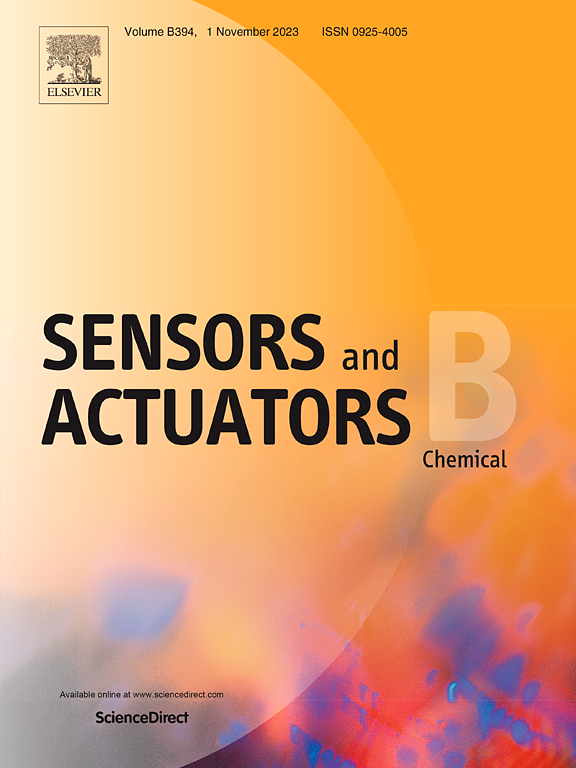Machine learning–based six-channel dual-peak photonic nose for identifying real organophosphorus nerve agents and their simulants
IF 8
1区 化学
Q1 CHEMISTRY, ANALYTICAL
引用次数: 0
Abstract
The timely identification and characterization of chemical agents present in battlefield environments are crucial objectives for ensuring national public safety. In this study, we synthesized two polymers with distinct solubility parameters by encapsulating two styrene materials, each featuring different functional groups. The synthesized polymers were utilized as low-refractive-index layers and were alternately combined with three metal–organic frameworks that possessed varying refractive indices to construct multi-species photonic units. Based on the unique interactions of each photonic unit with different types of gases, we developed a six-channel photonic nose with dual-peak and dual-pattern recognition capabilities for distinguishing nine types of organophosphorus chemical agent gases. Moreover, for the first time, the photonic nose has been integrated with a machine learning algorithm to identify nerve agents. The developed photonic nose successfully detected four organophosphorus agents, including sarin, soman, VX and tabun, within 40 s, achieving an impressive accuracy rate of 100 %. Notably, by utilizing the algorithm, the developed photonic nose could effectively distinguish the organophosphorus nerve agents and their five common simulants. Additionally, the photonic nose was quantitatively evaluated using dimethyl methylphosphonate as a representative agent, yielding results that also demonstrated 100 % accuracy. Furthermore, the photonic nose sensor successfully identified mixed agents, highlighting its potential for monitoring public safety concerning organophosphorus nerve agents.
基于机器学习的六通道双峰光子鼻识别有机磷神经毒剂及其模拟物
及时识别和表征战场环境中存在的化学制剂是确保国家公共安全的关键目标。在这项研究中,我们通过封装两种具有不同官能团的苯乙烯材料,合成了两种具有不同溶解度参数的聚合物。合成的聚合物被用作低折射率层,并与具有不同折射率的三种金属有机框架交替组合以构建多种光子单元。基于每个光子单元与不同类型气体的独特相互作用,我们开发了具有双峰双模式识别能力的六通道光子鼻子,用于区分9种有机磷化学剂气体。此外,光子鼻子首次与机器学习算法相结合,用于识别神经毒剂。研制的光子鼻在40秒内成功检测出沙林、索曼、VX和塔本等4种有机磷毒剂,准确率达到100%。值得注意的是,利用该算法,所开发的光子鼻子可以有效地区分有机磷神经毒剂及其五种常见的模拟物。此外,以甲基膦酸二甲酯为代表剂对光子鼻进行了定量评估,结果也证明了100%的准确性。此外,光子鼻传感器成功识别了混合毒剂,突出了其在有机磷神经毒剂公共安全监测方面的潜力。
本文章由计算机程序翻译,如有差异,请以英文原文为准。
求助全文
约1分钟内获得全文
求助全文
来源期刊

Sensors and Actuators B: Chemical
工程技术-电化学
CiteScore
14.60
自引率
11.90%
发文量
1776
审稿时长
3.2 months
期刊介绍:
Sensors & Actuators, B: Chemical is an international journal focused on the research and development of chemical transducers. It covers chemical sensors and biosensors, chemical actuators, and analytical microsystems. The journal is interdisciplinary, aiming to publish original works showcasing substantial advancements beyond the current state of the art in these fields, with practical applicability to solving meaningful analytical problems. Review articles are accepted by invitation from an Editor of the journal.
 求助内容:
求助内容: 应助结果提醒方式:
应助结果提醒方式:


